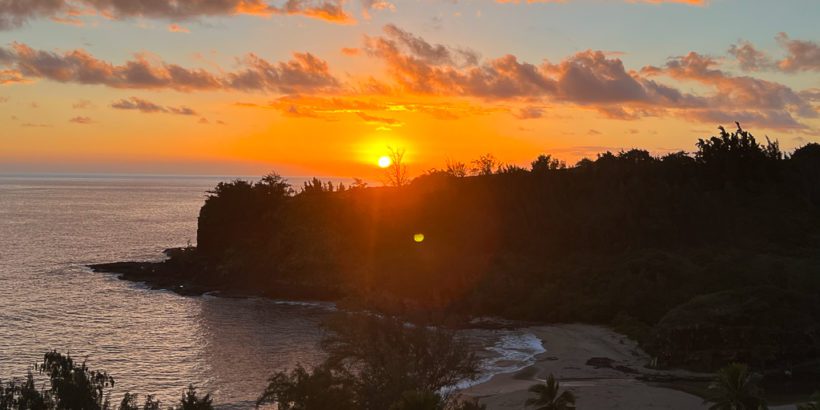Nowadays with everyone having a smart phone with a pretty decent camera, many of us love to take hundreds of photos during our trips.
And when it comes to stunning photos, it’s hard to beat the photos taken during a beautiful sunrise or sunset.
But how much time do you actually have to capture these moments and how can you better plan on witnessing these on your travels?
In this article, I’ll break down what you need to know about how long a sunset or sunrise is and give you some tips on planning so that you can witness these amazing sights!
Table of Contents
How long does a sunset or sunrise last?
How long a sunset or sunrise will last will depend on the time of year and also on your location, such as your latitude.
But before diving into some details, first, let’s clarify what we mean when we say a sunset or sunrise.
Right now, we are talking about the time it takes for the disc of the sun (the limb) to touch the horizon and then disappear below it or completely rise above it for a sunrise. For people in most locations this will only take 2 to 3 minutes.
Of course, the colors of a sunrise or sunset can last well beyond these time periods and we will talk about that more below.
Interestingly, the longest sunrises and sunsets happen around the solstices.
In case you need a refresher, we have a summer solstice in June (the longest day of the year) and a winter solstice in December (the shortest day of the year).
These have the longest sunrises and sunsets because the Sun takes a shallower angle in the sky during these times.
So just how long are these sunrises and sunsets?
If you were at 40° latitude which is roughly the latitude of Philadelphia and Denver, the Sun will set in about 3 1/4 minutes. That’s about half a minute longer than the sunset would be on the day of the spring or autumn equinox.
And just to add to that, because the Sun is closer to the Earth at the winter solstice than the summer solstice (seems backwards, I know), the Sun appears a little larger. Since it is a bigger object at the winter solstice, the sunset takes slightly longer at that time.
(We are just talking about a few seconds here so it’s not a major difference but still pretty cool to know.)
If you’ve ever traveled to a place like Iceland or Norway or even Alaska, you may have noticed that the sunrises and sunsets can last much longer compared to closer to the equator.
I remember the first time I ever visited Iceland. We touched down at the airport towards the beginning of a beautiful sunrise. We had to deplane, go through immigration, collect our bags, and then get on a shuttle bus, and through that entire time the sunrise was still going strong!
It was mind blowing but comes with an explanation because the closer to the poles that you get, the longer the sunsets and sunrises get.
Going back to the example of a sunset on a solstice.
If you were near the Arctic Circle, which is about 65° latitude north, the duration of the sunset would be about 15 minutes! (No wonder it seemed to last so long when I visited Iceland.)
Now compare that to being at the equator where the latitude is 0°. On a solstice day, the Sun may only take 2 1/4 minutes to set.
Pretty interesting stuff.
But what about the visuals of the sunset?
Although it may only take the Sun a couple of minutes to touch the horizon and dip below it, those colors can linger on for much longer.
First, let’s start off with the obvious.
Every sunset is a little bit different.
As someone who takes a stroll at sunset nearly every day and has observed thousands of them, I can tell you that the display of brilliant colors cast in the sky will vary from night to night.
Sometimes you can tell that an awesome sunset is about to go down based on the type of clouds in the sky, especially once you get the first faint glimpses of color splashed upon them.
But the colors you see can depend a lot on what type of particles are suspended in the air.
In terms of how long the peak colors typically last on a sunset, I’d say that on average you have about a 5 to 15 minute window where you can see the most brilliant colors.
Sometimes that window is longer, sometimes it’s shorter. It’s not uncommon for traces of color to be found somewhere in the sky ~30 minutes before or after a sunset or sunrise.
For that reason, if I really want to experience the full beauty of a sunset I typically try to catch it around 20 minutes before and after the scheduled sunset time.
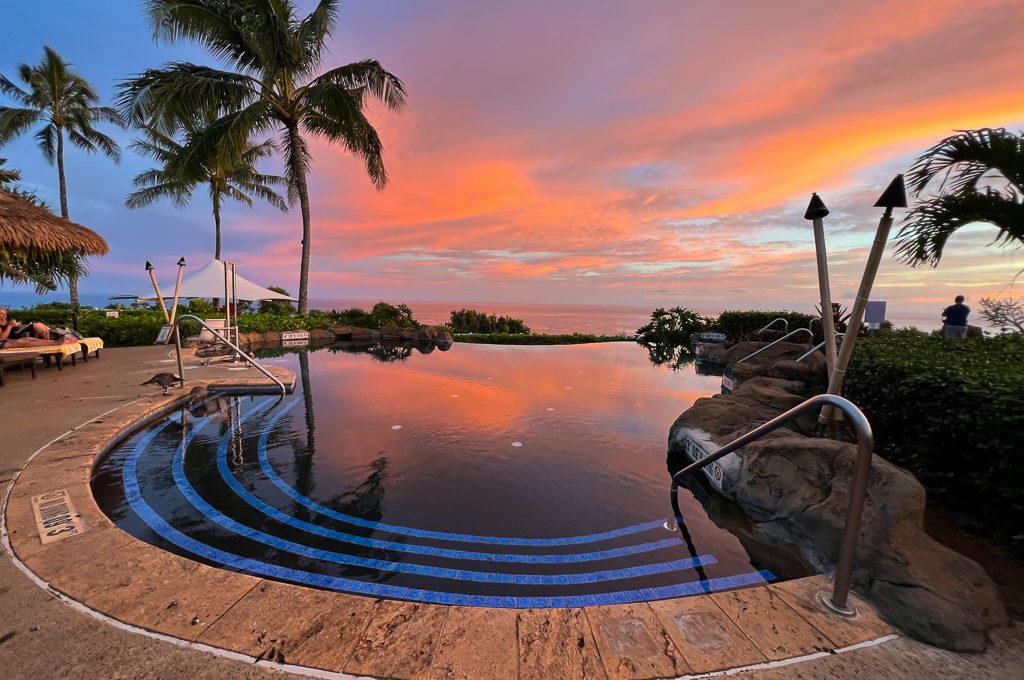
Tips for observing sunsets and sunrises
Know your latitude
As you can already tell from above, these sunset and sunrise events last longer at latitudes close to the poles so you will have more time to admire them.
At the same time, if you are somewhere close to the equator, such as the Caribbean, then you will have less time so you want to be a little bit more diligent about getting set up. Your viewing window will be shorter.
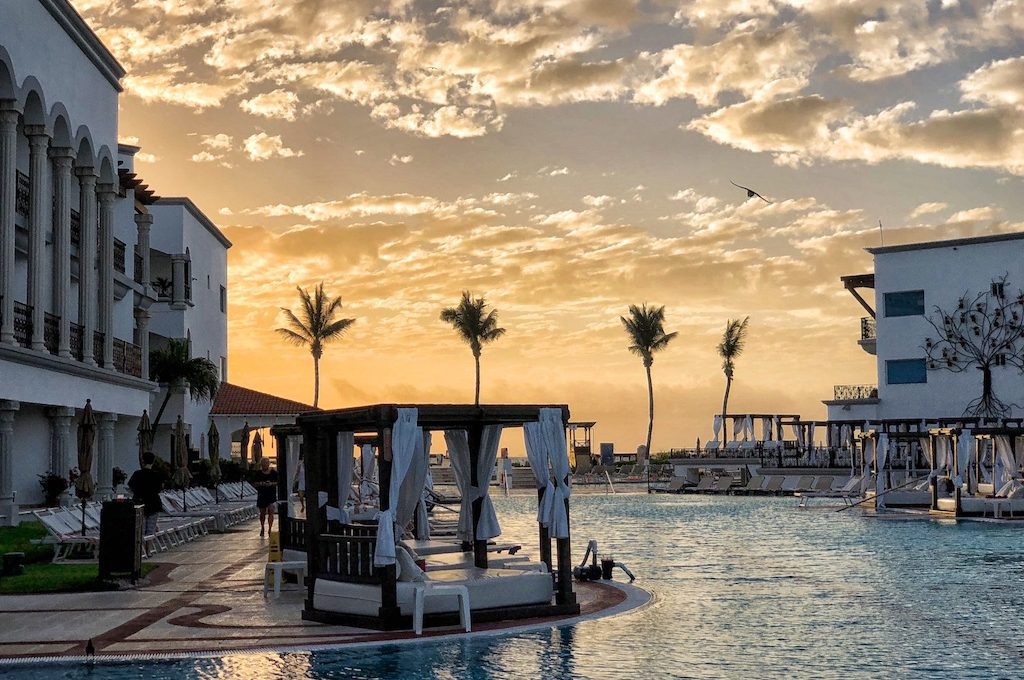
Know your geography
If you will be facing mountains to the west then you won’t actually be able to see the Sun dip below the horizon so your sunrise time is going to be sooner than what you might find online.
If you are concerned about mountains blocking your horizon, you should try to locate where exactly the Sun will be falling on a map. If you want to see where exactly the Sun is expected to rise and set, a good online calculator to use is this one right here.
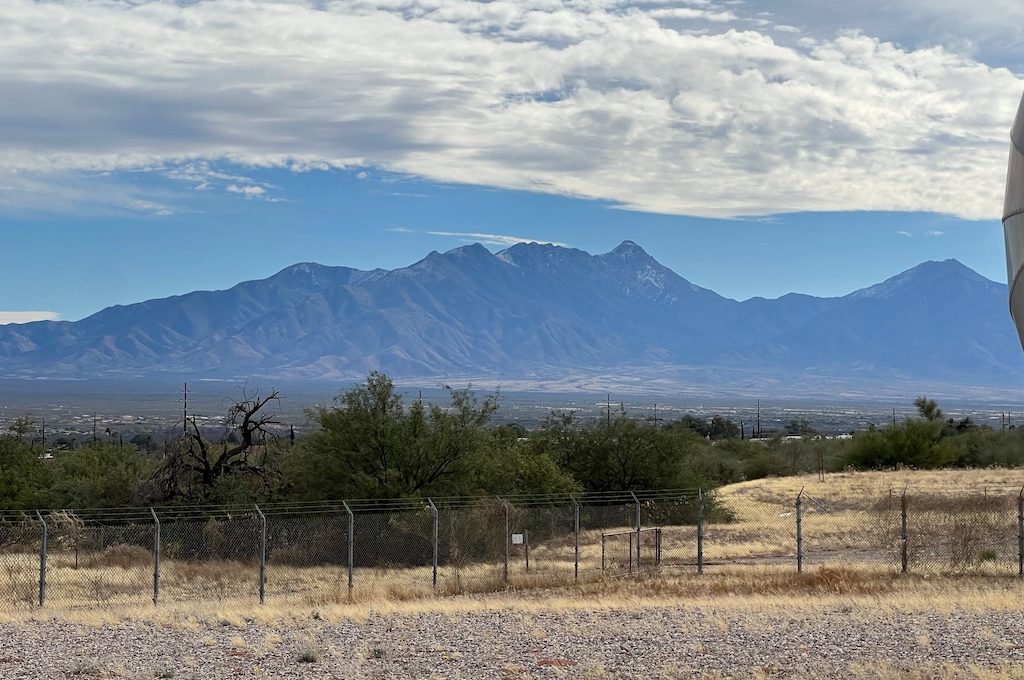
Check out the clouds
Something else you may want to look at is cloud coverage.
You can use various tools to check the cloud coverage for your area to see if the sun will be blocked. I personally like to use this tool to check the cloud coverage. (I usually click on Geocolor).
If you want to take your predictions a step further you can check out an actual sunset forecaster. Basically, the warmer the colors, the better the odds of a more impressive sunset.
Plan your meals accordingly
A lot of travelers miss sunrises and sunsets because they are eating breakfast or dinner during those times.
But if you do some planning and know what time window you need to be outside to view the Sun, you can plan your meals around those times. If we ever have to make dinner reservations, usually the sunset time is the first thing that I check before confirming.
And don’t just assume you know the sunset time! Be sure to check it.
When you change time zones the sunset time can change by a good margin, especially if you are traveling a decent distance north or south.
Don’t just experience the sunset through your camera
Yes, capturing the stunning pink and orange colors of a sunset with a camera is exciting. But there is something special about watching a sunset play out with your own eyes.
Try to allocate some time to just admire the scene with your eyes. If needed, hook up an intervalometer on your camera so that you can automate some of your shots and just relax while you soak in the magnificence of a sunset.
Golden hour
Golden hour is super important for photographers as it’s often an optimal time to take landscape photography due to the lighting changes. But this can also be a great time to get your travel photos as well.
You can expect golden hour to begin about one hour prior to sunset. In the morning, it will begin after sunrise and end about one hour after sunrise.
In some locations, such as the Grand Canyon, you definitely want to soak up golden hour because it’s arguably the best time to get your shots!
If you really want to take in a sunset with photography you should try to set up your spot at the beginning of golden hour, especially if you think it’s going to get busy in that area.
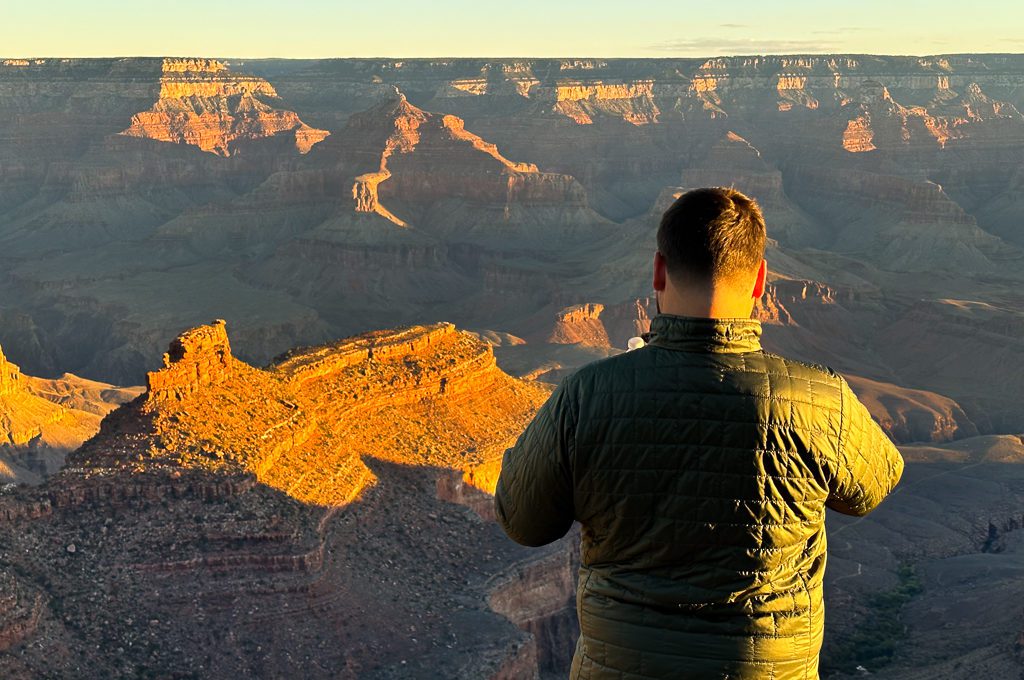
Wait for second sunsets
A second sunset is whenever the initial wave of colors from a sunset dies down only to re-surge with new colors.
This often happens around 10 to 15 minutes after sunset, a time that many people have already abandoned their posts for sunset viewing!
The colors may not be as bright as they would be when the Sun is above the horizon but they can still be pretty spectacular and sometimes even more impressive.
There have been a fair number of times that I thought a sunrise or sunset was mostly a dud only for me to be astonished by the colors to come in round 2!
Look for the green flash
There is a little known phenomenon which causes a green flash right at sunset.
The best time to look for this is whenever you have a clear view of a horizon such as from a mountain or on the open ocean.
It helps if you use a pair of binoculars but you need to wait for the sun to mostly dip below the horizon (it can also happen at sunrise). The green flash will only last for a couple of seconds (it’s even shorter near the equator) so you need to be ready!
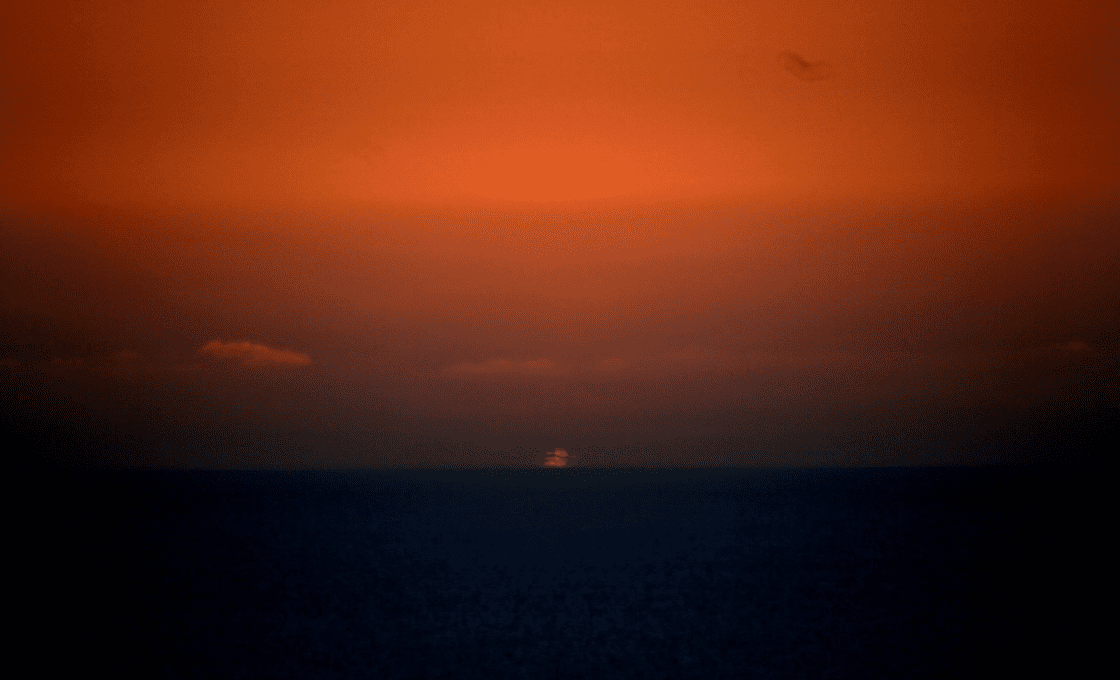
Final word
I love experiencing sunrises and sunsets when traveling because it’s a great way to remember your trip.
Thinking back on memories like “that stunning sunset at the beach in Kauai” is such an awesome way to look back on your travels. Not only that but you will come back home with more stunning photos and probably a better appreciation for your destination due to the sheer beauty you witnessed!
Daniel Gillaspia is the Founder of UponArriving.com and the credit card app, WalletFlo. He is a former attorney turned travel expert covering destinations along with TSA, airline, and hotel policies. Since 2014, his content has been featured in publications such as National Geographic, Smithsonian Magazine, and CNBC. Read my bio.

